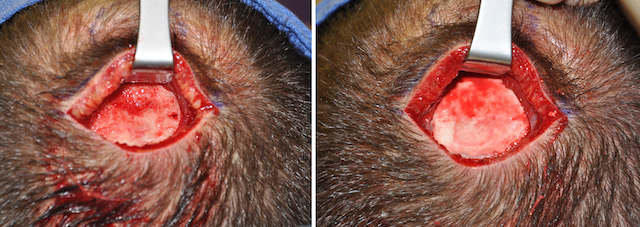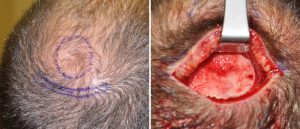Background: Congenital skull defects occur in a wide variety of presentations. In essence it is any contour irregularity that results in a noticeable loss of contour projection. Most congenital skull defects are not full-thickness. Rather they are partial thickness with inadequate bine thickness compared to the surrounding bone.
One of the smaller congenital skull defects is that involving the posterior fontanelle. One of the infant skull soft spots, the posterior fontanelle sits at the intersection of multiple skull growth plates. It is there early on after life to accommodate the rapidly growing brain. But by 18 months after birth the posterior fontanelle has closed over and becomes a solid bone covering. But in some patients the bone of the posterior fontanelle does not thicken up as much and can remain as an indentation about the size of a thumbprint.
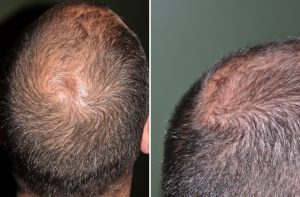
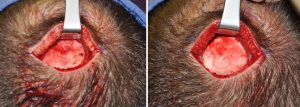
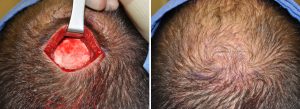
Case Highlights:
1) One of the smaller congenital skull defects is that of a posterior fontanelle depression or indentation.
2) The dip in the crown of the skull becomes apparent as the hair coverage becomes thinner.
3) The direct application of bone cement into the skull depression provides an immediate and ‘spot’ cranioplasty procedure.
Dr. Barry Eppley
Indianapolis, Indiana

